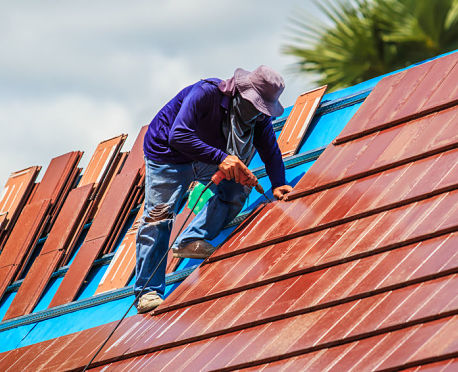Expanding outdoor living spaces has become increasingly popular in recent years, and one of the most effective ways to achieve this is through the installation of a roof deck. Roof decks offer numerous benefits, providing homeowners with additional space to relax, entertain, and enjoy the outdoors while maximizing the functionality of their property. However, ensuring the safety of roof deck installations is paramount to their success. First, safety begins with proper planning and design. Before embarking on a roof deck installation project, it is essential to consult with experienced professionals, such as architects, structural engineers, and contractors, to assess the feasibility of the project and develop a comprehensive plan that adheres to building codes and regulations. This includes evaluating the structural integrity of the existing roof, ensuring it can support the additional weight of the deck and any intended usage. Furthermore, proper materials selection is crucial for ensuring the safety and longevity of a roof deck. High-quality materials that are weather-resistant, durable, and capable of withstanding the elements are essential for ensuring the structural integrity of the deck over time.

This includes materials such as pressure-treated wood, composite decking, or metal framing, depending on the specific requirements and aesthetic preferences of the homeowner. In addition to materials, attention must be paid to the construction techniques employed during the installation process and Free Roof Inspection with Drone. Experienced contractors should be enlisted to ensure that the deck is properly anchored and securely fastened to the existing structure, minimizing the risk of collapse or failure. Proper waterproofing measures should also be implemented to prevent water damage and ensure the long-term viability of the deck. Moreover, safety features such as railings, barriers, and access points should be carefully considered and incorporated into the design of the roof deck. Railings are essential for preventing falls and providing a sense of security for occupants, especially in elevated or exposed locations. Additionally, barriers such as parapet walls or privacy screens can help shield the deck from strong winds and create a more intimate outdoor environment.
Furthermore, providing safe and convenient access to the roof deck is essential for ensuring usability and enjoyment. This may involve installing staircases, ladders, or access hatches, depending on the layout and configuration of the property. Handrails and lighting should also be incorporated into the design to enhance safety and visibility, particularly during evening hours or inclement weather. Regular maintenance and inspections are also crucial for ensuring the ongoing safety of a roof deck. Homeowners should routinely inspect the deck for signs of wear and tear, such as loose fasteners, damaged materials, or water infiltration, and address any issues promptly to prevent further damage or deterioration. Additionally, seasonal maintenance, such as cleaning and sealing, can help prolong the lifespan of the deck and maintain its aesthetic appeal. In conclusion, roof deck installations offer a valuable opportunity to expand outdoor living spaces and enhance the enjoyment of a property. However, ensuring the safety of these installations requires careful planning, proper materials selection, skilled construction techniques, and ongoing maintenance.